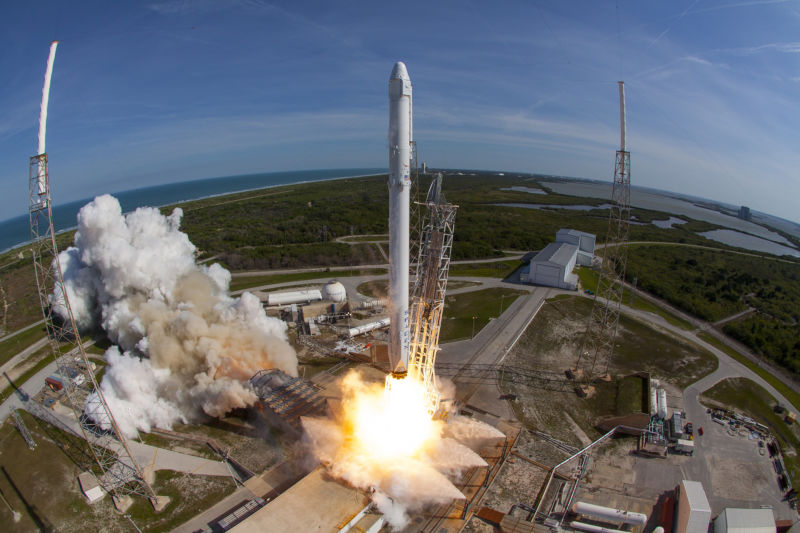
A new analysis finds that NASA will pay significantly more for commercial cargo delivery to the International Space Station in the 2020s rather than enjoying cost savings from maturing systems. According to a report by the space agency’s inspector general, Paul Martin, NASA will likely pay $400 million more for its second round of delivery contracts from 2020 to 2024 even though the agency will be moving six fewer tons of cargo. On a cost per kilogram basis, this represents a 14-percent increase.
One of the main reasons for this increase, the report says, is a 50-percent increase in prices from SpaceX, which has thus far flown the bulk of missions for NASA’s commercial cargo program with its Dragon spacecraft and Falcon 9 rocket.
This is somewhat surprising because, during the first round of supply missions, which began in 2012, SpaceX had substantially lower costs than NASA’s other partner, Orbital ATK. SpaceX and Orbital ATK are expected to fly 31 supply missions between 2012 and 2020, the first phase of the supply contract. Of those, the new report states, SpaceX is scheduled to complete 20 flights at an average cost of $152.1 million per mission. Orbital ATK is scheduled to complete 11 missions at an average cost of $262.6 million per mission.
Higher prices
But that cost differential will largely evaporate in the second round of cargo supply contracts. For flights from 2020 to 2024, SpaceX will increase its price while Orbital ATK cuts its own by 15 percent. The new report provides unprecedented public detail about the second phase of commercial resupply contracts, known as CRS-2, which NASA awarded in a competitively bid process in 2016. SpaceX and Orbital ATK again won contracts (for a minimum of six flights), along with a new provider, Sierra Nevada Corp. and its Dream Chaser vehicle. Bids by Boeing and Lockheed Martin were not accepted.

The inspector general found that the higher costs for the CRS-2 contracts—$71,800 per kg versus $63,200 during the first round—were driven by three factors: higher prices from SpaceX, NASA’s decision to have three companies participate in the program instead of two, and the integration costs of berthing and docking the three different spacecraft to the International Space Station.
For these extra costs, NASA will be getting more capability, including greater capacity for pressurized cargo. This should reduce the overall number of flights and accordingly reduce the time required by astronauts to capture, load, and unload cargo resupply spacecraft. The space agency will also have three providers instead of two, which will offer increased flexibility in case one of the three providers has an accident or other problem that delays its ability to fly.
SpaceX rationale
The inspector general cited a number of reasons for SpaceX's 50-percent price increase per kg, including an upgrade to the company's second generation of Dragon spacecraft that increased the cargo volume by 30 percent, longer duration missions, and quicker access to the Dragon 2 spacecraft after it returns science samples to Earth.
Perhaps most tellingly, the inspector general’s report notes the following about SpaceX’s reasoning: “They also indicated that their CRS-2 pricing reflected a better understanding of the costs involved after several years of experience with cargo resupply missions.” This suggests the company either under-bid on the first round of supply contracts or failed to achieve some of the cost savings it had hoped to achieve. (The company declined comment to Ars).
Even so, the report is not all bad news for SpaceX. In comparing prices, the inspector general said that SpaceX should receive credit for the capacity to return cargo to Earth, a capability that Orbital ATK’s Cygnus spacecraft does not have. The company, along with NASA, was also credited with lowering costs in the overall launch market by pushing through development of the Falcon 9 rocket.
“Officials believe competition has contributed to lower prices for NASA launches,” the report states. “NASA officials reviewed past launch pricing and found the cost for a basic Atlas V configuration decreased by roughly $20 million per launch after the Falcon 9 became eligible in 2013 to compete for launch services contracts through the Agency’s Launch Services Program.”
reader comments
322